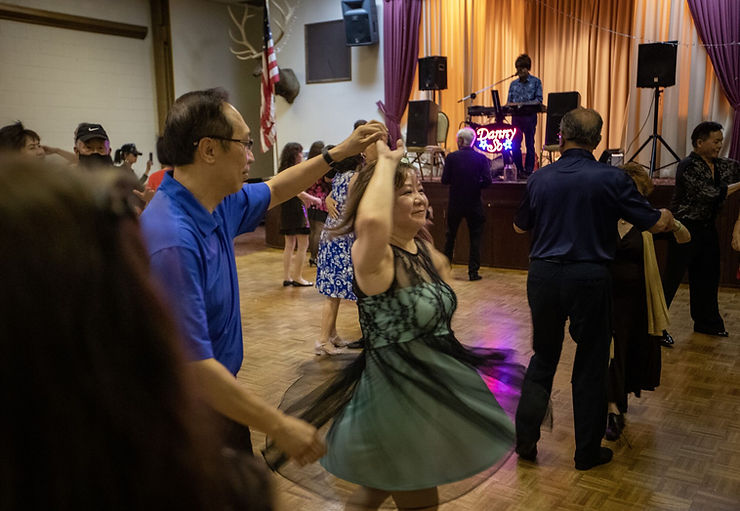By: Alex Wang
Amidst the tranquil sunset hues that bathe Monterey Park, a heartwarming sight unfolds. A diverse group of individuals, each with their own stories etched with pain and resilience, gather in an open space. The strains of music weave through the air, and as the melodies grow stronger, so does the unity among these survivors.
They sway to the rhythm, feet tracing patterns upon the ground, and arms outstretched like wings ready to take flight. The dance floor transforms into a canvas of emotions, every step echoing their shared journey from darkness toward a hopeful light. The world fades away as their movements become a form of catharsis, a way to externalize the emotions that words alone could never capture.
In the aftermath of the tragic shooting incident that shook the community of Monterey Park just a few months ago, a group of survivors has found an unexpected source of healing and empowerment: dance. The survivors, who had faced the horrors of the shooting, have come together to turn their pain into art, finding solace and strength in the rhythm of movement. Their journey toward recovery is not only inspiring but also a testament to the remarkable resilience of the human spirit.
On the evening of July 30, 2023, a senseless act of violence left the residents of Monterey Park stunned and heartbroken. The incident, which claimed several lives and left many others injured, cast a shadow of grief and fear over the tight-knit community. However, amidst the darkness, a glimmer of hope emerged as survivors started to find ways to heal, both individually and collectively.
One remarkable example of this healing process is embodied by Emily Ramirez, a survivor who suffered both physical and emotional wounds during the shooting. Emily, 26, was shot in the leg and witnessed the traumatic events unfold before her eyes. She struggled with nightmares and anxiety in the aftermath of the incident, struggling to find a way to cope with the trauma she had endured.
However, Emily’s path to healing took an unexpected turn when she attended a community event organized to support the survivors. It was there that she met Maria Hernandez, a professional dancer who had volunteered to facilitate a dance workshop for the survivors. Initially hesitant, Emily decided to give it a try, and what followed was nothing short of transformational.
“The first time I stepped onto the dance floor, I felt a rush of emotions – fear, anxiety, but also a glimmer of hope,” Emily shared. “As I moved to the music, I felt like I was shedding the weight of the trauma, even if just for a moment .”
Emily’s experience is not an isolated one. Many other survivors have joined the dance workshops led by Maria Hernandez, finding that the power of movement and expression helps them process their emotions and regain a sense of control over their lives. Clinical psychologist Dr. Rebecca Turner explains that creative outlets like dance can have a profound impact on trauma recovery.
“Engaging in creative activities like dance can activate different parts of the brain, allowing survivors to process their emotions in a nonverbal way,” Dr. Turner says. “It can help reduce anxiety, build self-esteem, and create a sense of community among survivors who share a common experience.”
As the weeks have passed, the group of survivors has not only found healing through dance but also a newfound camaraderie. They have developed a strong bond, supporting each other through the highs and lows of their recovery journey. The dance workshops have become a safe space where they can express themselves without judgment, forging connections that extend beyond the dance floor.
The Monterey Park community has rallied behind the survivors, with local businesses and organizations providing support for the dance workshops. The workshops are now a regular occurrence, open to all survivors and designed to accommodate varying levels of physical ability. The healing power of dance has become a beacon of hope for the entire community, serving as a reminder that even in the face of darkness, resilience and unity can prevail.
As Emily Ramirez and her fellow survivors continue to find solace in the graceful movements of dance, their journey serves as a testament to the strength of the human spirit and the transformative power of art. Their story resonates as a reminder that healing is possible, even in the wake of unimaginable tragedy, and that the bonds forged in adversity can be the ones that carry us forward towards a brighter future.











